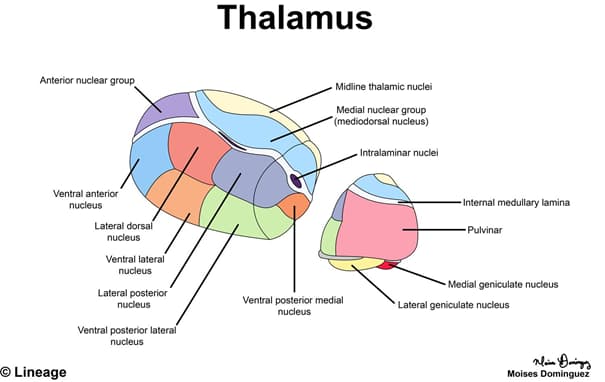| Nuclei | Circuitry |
| Anterior nuclear group | Inputmamillary body (via the mammillothalamic tract)Outputcingulate gyrus (part of Papez circuit) |
| Medial nuclear group | Inputamygdalaprefrontal cortextemporal lobeOutputprefrontal cortexcingulate gyrusNuclei exampledorsomedial nucleusthiamine deficiency can result in degeneration of this thalamic nuclei |
| Ventral posterolateral (VPL) nucleus | Inputsensory information from the dorsal columns and spinothalamic tractdorsal columnspressurevibrationproprioceptionfine touchspinothalamicpain and temperaturecrude touchOutputprimary somatosensory cortex |
| Ventral posteromedial (VPM) nucleus | Inputsensory information of trigeminal and gustatory afferents (in other words, the face)Outputprimary somatosensory cortex |
| Ventral lateral (VL) nucleus | Inputglobus palliduscerebellar dendate nucleusOutputprimary motor cortex |
| Medial geniculate body | Inputinferior colliculus (in other words, hearing)Outputauditory cortex |
| Lateral geniculate body | Inputoptic nerve (cranial nerve II)Outputprimary visual cortex |




